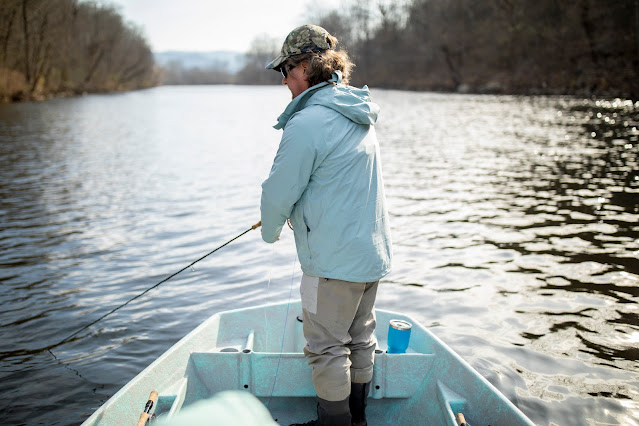Howdy Friends! I’m Brian Flechsig from Mad River Outfitters and the Midwest Fly Fishing School. If you’re just joining us on this fly fishing journey, welcome aboard! Today, we delve deeper into one of the most iconic elements of this sport: the fly rod.
The Fly Rod: A Flexible Lever
While the fly rod may initially seem like the star of the show, it's more of a supporting actor. Imagine it as a flexible lever that facilitates the act of casting. The real protagonist is the fly line itself. It’s what primarily gives life to the cast. The fly rod, however, aids in making the movement of this line more fluid and controlled.
Interestingly, with enough skill, one can cast the fly line even without a rod - although, take it from me, it's a spectacle that’s less about finesse and more about comedy. And, once your fly lands on the water without a rod, you'll find yourself in quite the predicament!
Deciphering Fly Rods & Lines
The selection of your first fly rod can seem overwhelming, but let's simplify it:
Fly Line Weight: Fly lines are weighed in grains. The fly fishing industry uses these weights to categorize lines: from one weight (the lightest and thinnest) to 15 or 16wt (the heaviest and thickest).
Fly Rod Weight: Rods are also categorized by weight, and here's the best part: it's simple math! A one-weight fly rod is designed to cast a one-weight fly line. The same principle applies as you move up the scale.
What Does Each Weight Mean?:
1 to 3wt: Think of these as ultra-light. Perfect for trout fishing and casting dry flies. They also suit panfish.
4 to 6wt: This is where most beginners find their groove. Ideal for a range of activities, from trout fishing to light-duty bass fishing.
7 to 9wt: These are for the larger catches like salmon, steelhead, pike, and even some saltwater fish.
10 to 12wt: Perfect for muskie and larger saltwater species like redfish and tarpon.
13 to 16wt: This is the heavyweight division. We're talking blue water fishing – think sailfish, marlin, and tuna.
For the majority of you, the 4 to 6 weight category will be your sweet spot as you embark on your fly fishing journey. Yet, the choice of rod doesn’t end at weight. Stay tuned for our next installment where we'll discuss the length and action of the fly rod, which will further refine your understanding and help you make an informed selection.
Want to learn more and watch our entire series? Head over to our YouTube channel to experience the full scope of 'Getting Started in Fly Fishing'. Don't forget to subscribe for more insights and tips!
Watch the full series on our YouTube channel!


